District Energy Center
Toronto Community Housing - Regent Park
Creating a modular silencer solution to stop cooling tower noise from disrupting the surrounding community.
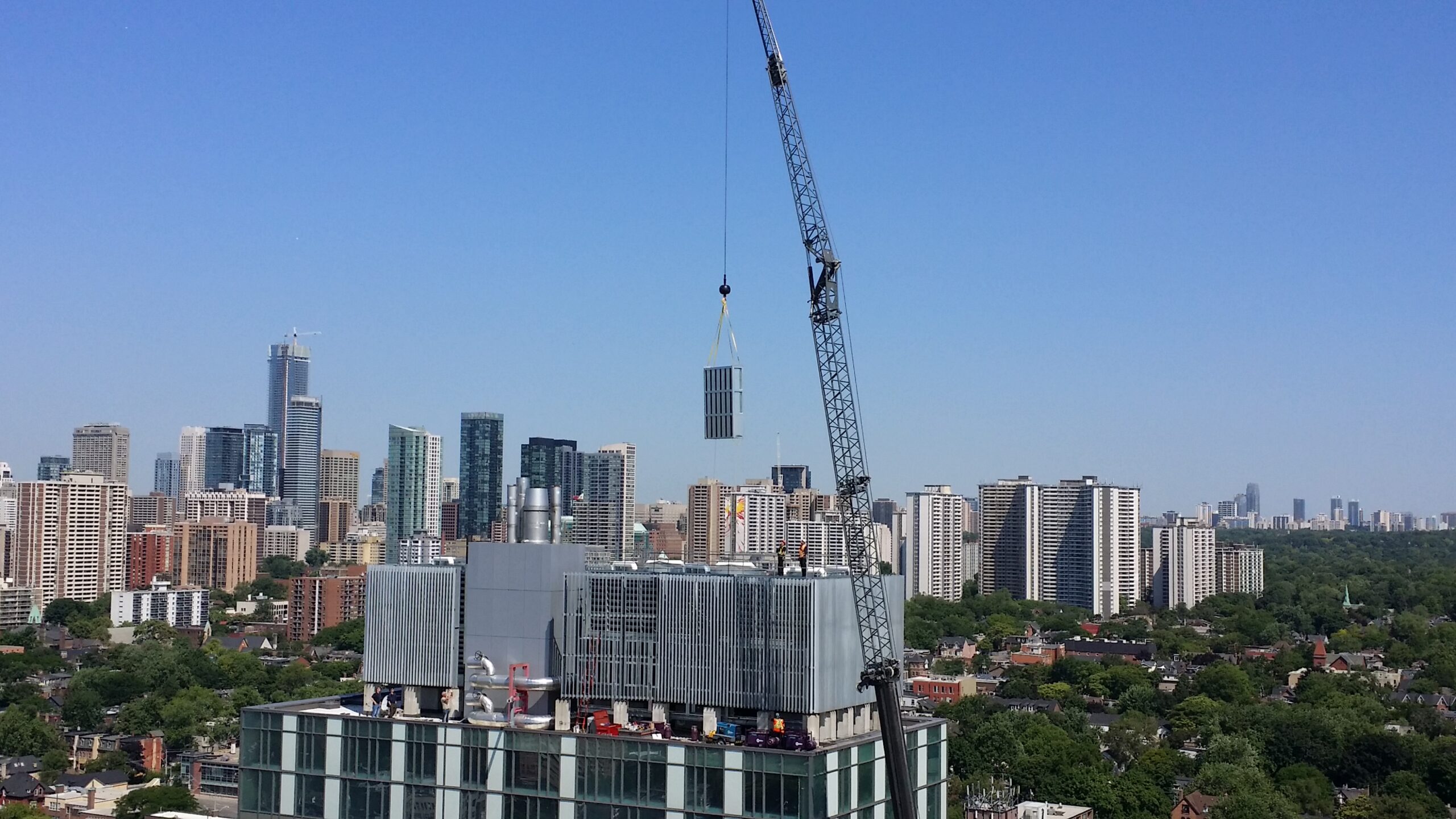
Overview
Under pressure from the surrounding community, the Toronto Community Housing District Energy & Residential complex at Regent Park required a sound attenuation solution for the evaporative cooling towers on top of their 26-story tower. While the sound generated by the equipment did fall close to compliance with provincial and municipal guidelines, the sensitized surrounding community necessitated further mitigation measures.
The Project Facility
District Energy Center
The Noise Source
Evaporative Cooling Towers (1300T)
The Solution
Custom Modular Intake Silencer Banks
The Project Team
Acoustic Engineer– HGC
Owner – Toronto Community Housing
Reason for Mitigation:
Disruption to the surrounding community. Compliance with provincial noise ordinances.
Project Challenges
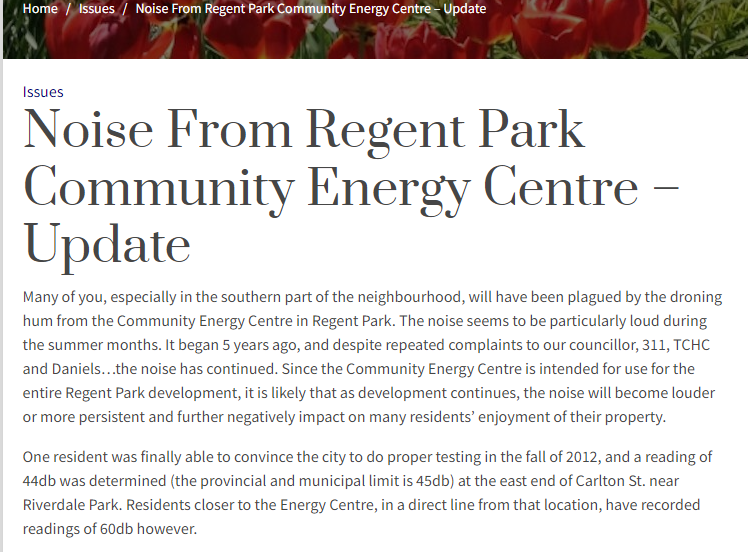
Community Sensitivity
The Cabbagetown Residents’ Association listed sound emissions from the Regent Park Complex as one of their top five issues list for five years, filing several petitions and formal complaints to City Bylaw officers. While the city’s readings showed that the facility was very close to the provincial and municipal decibel limit, residents insisted that those in a direct line-of-site with the Energy Center recorded readings well in excess of the regulations. What started as a series of isolated complaints eventually cascaded into a large community sensitivity problem. An acoustic consultant was eventually engaged to conduct a formal assessment of the facility’s noise emissions, which later concluded that the tonal noise emanating from the cooling tower intakes was the primary culprit that was disrupting the nearby community.
Available Space
The facility design included an aesthetic screen installed around the cooling towers, leaving approximately 36” of clearance between them. Attenuation solution options were therefore limited as acoustic performance and pressure drop limitations needed to be balanced with the incredibly narrow clearance available to install noise control.
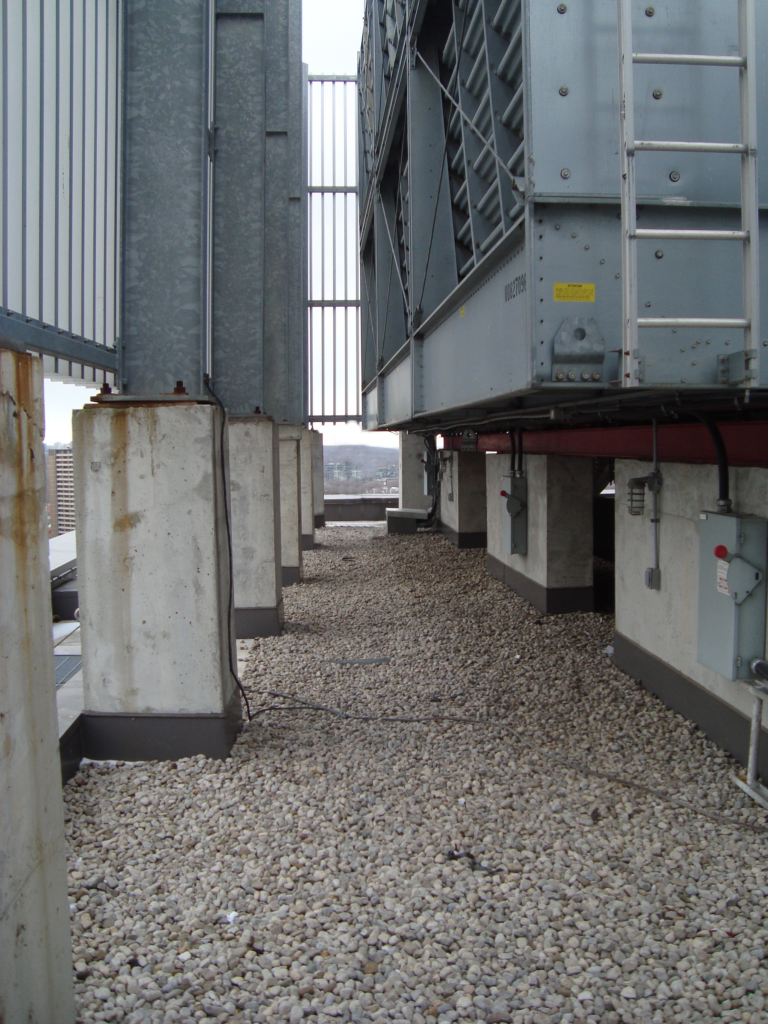

Installation Challenges
The large, induced draft cooling towers for the Energy Center were on the roof of the 26-story Regent Park building, which resulted in limited access to the installation site. Furthermore, the height from the top of the roof to the top of the equipment was approximately 30’, requiring a very tall and very slender solution. Working within the structural and spatial constraints of the existing facility, therefore, required a modular solution to limit the amount of site time during installation.
Project Solution
Design
The resultant sound attenuation design was a series of low-static intake silencer baffles nested into modular steel tube frames. 24 modular silencer banks were uniquely designed to fit within the space between the six dual-cell cooling tower intakes and the aesthetic screen. A substructure was built, spanning the existing concrete supporting pillars for both the aesthetic screen and the cooling towers themselves to provide a foundation for each of the modular silencer assemblies. Parklane’s structural engineering team conducted an analysis of the existing piers and roof frame to confirm there was sufficient capacity. All the steel and silencer elements were galvanized to prevent rust from forming, guaranteeing that the solution would operate for many years.
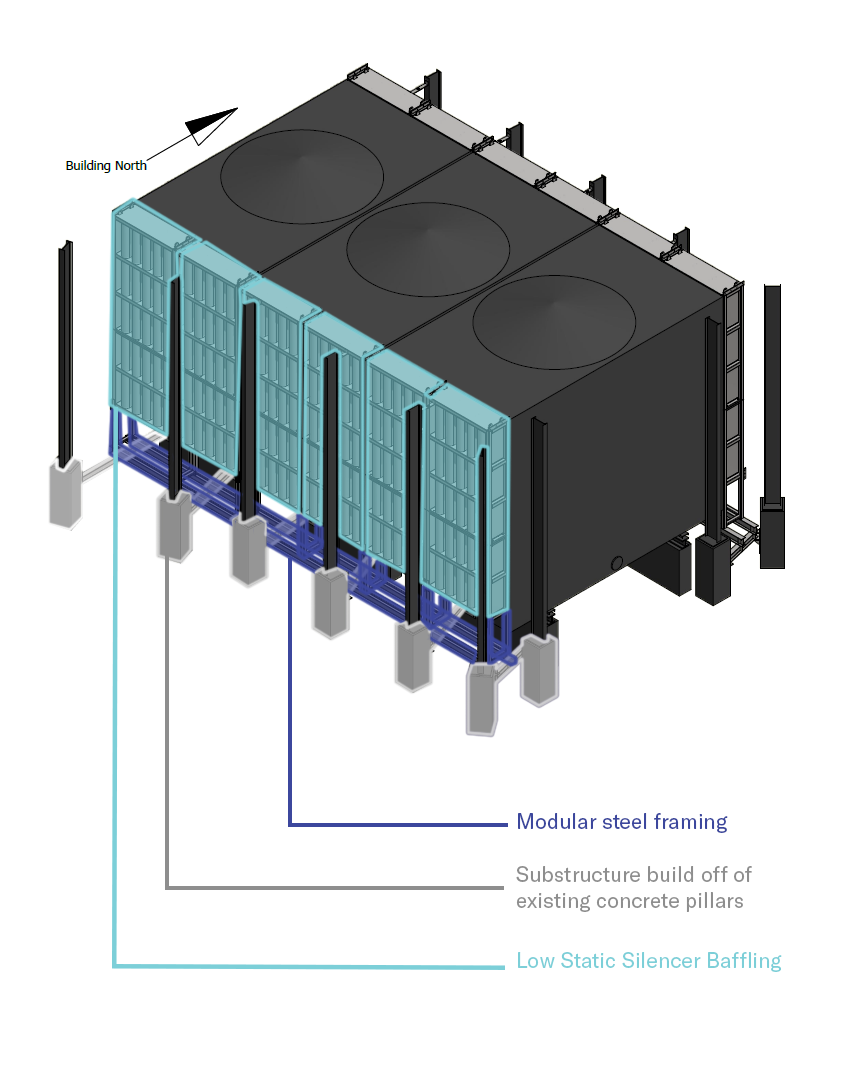
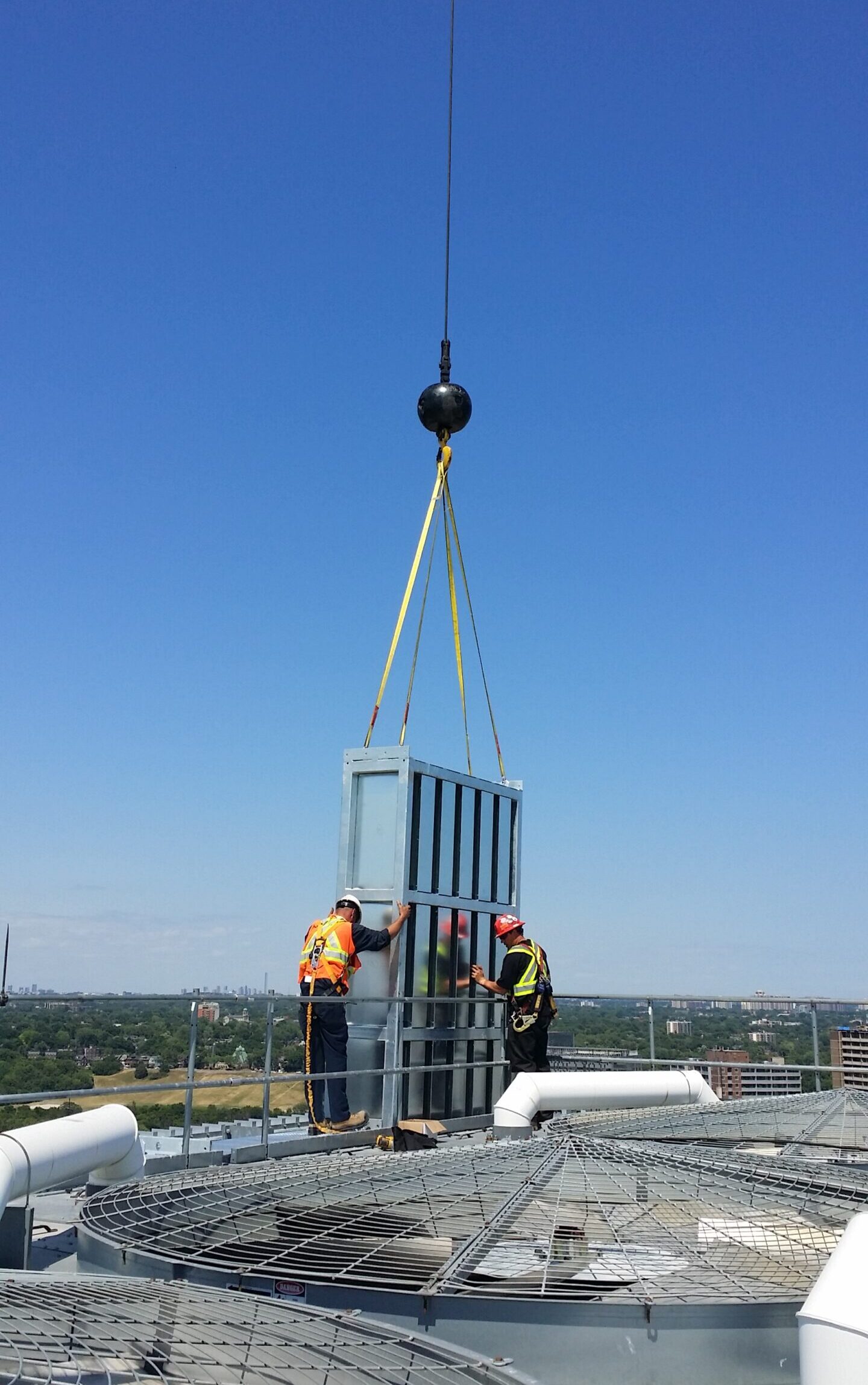
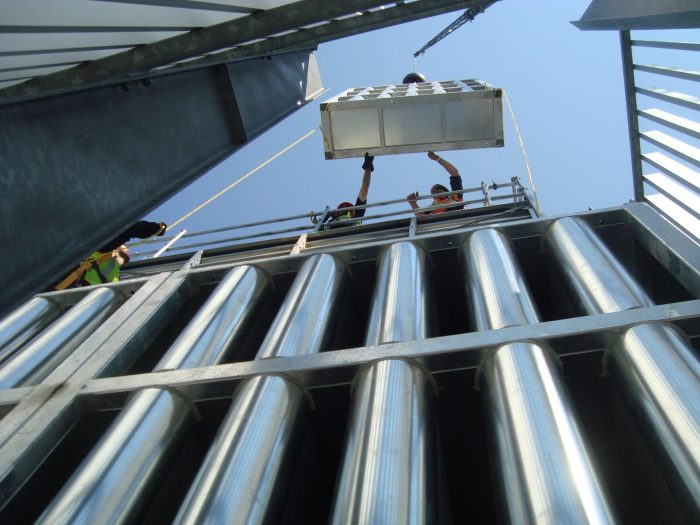
Installation
The Parklane Site Services Team provided complete onsite management and installation services for the project. This included the supply of a 350T crane for hoisting the silencer banks into place, in addition to managing all required traffic permits and road closures. The modular system design limited the onsite crane time to two working days, dramatically reducing disruption to both the facility and local traffic.
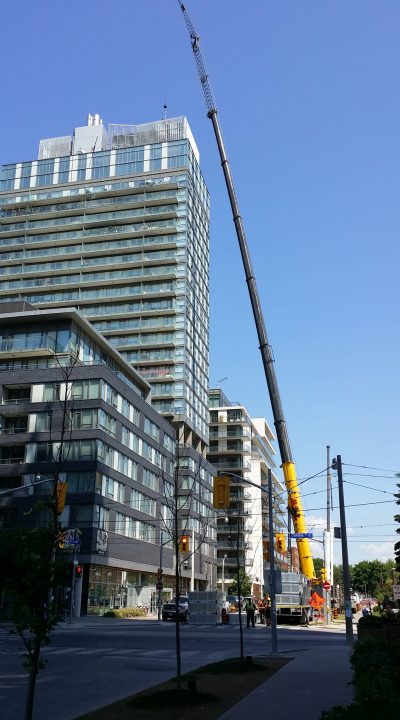
Community Response
As the project began in response to rising community pressure, the response of the surrounding community during the project cycle is a testament to the idea of audio-visual congruency (i.e., if you can see it, you often perceive to hear it). Community residents began to report relief from the noise as soon as the silencer installation began. The noticeable shift in public perception was evident in the online community groups that had been protesting the noise. As the facility owners found, full compliance was not enough to placate a sensitized community but, by working with acoustic consultants and specialists like Parklane, a solution could be developed that matched the full scope of regulatory requirements and mitigated the issue for those affected.
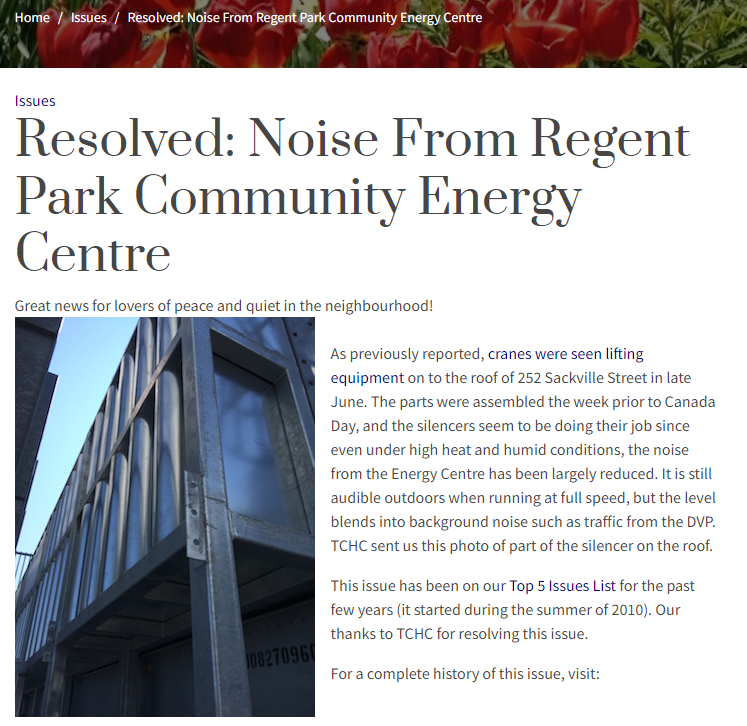

Results
By employing our signature, full-service approach, Parklane successfully devised a solution that achieved compliance with provincial guidelines while also addressing the needs of the local community. We meticulously managed the physical and logistical challenges presented by the rooftop location, creating an integrated solution that seamlessly blended into its surroundings. Throughout the entire process, we maintained an open and collaborative dialogue with both the building owners and Toronto Community Housing to ensure a smooth experience for all parties involved. The success of the Regent Park project serves as a shining example of how impactful it can be when owners, acoustic consultants, and suppliers come together to meet regulations and address community concerns appropriately.
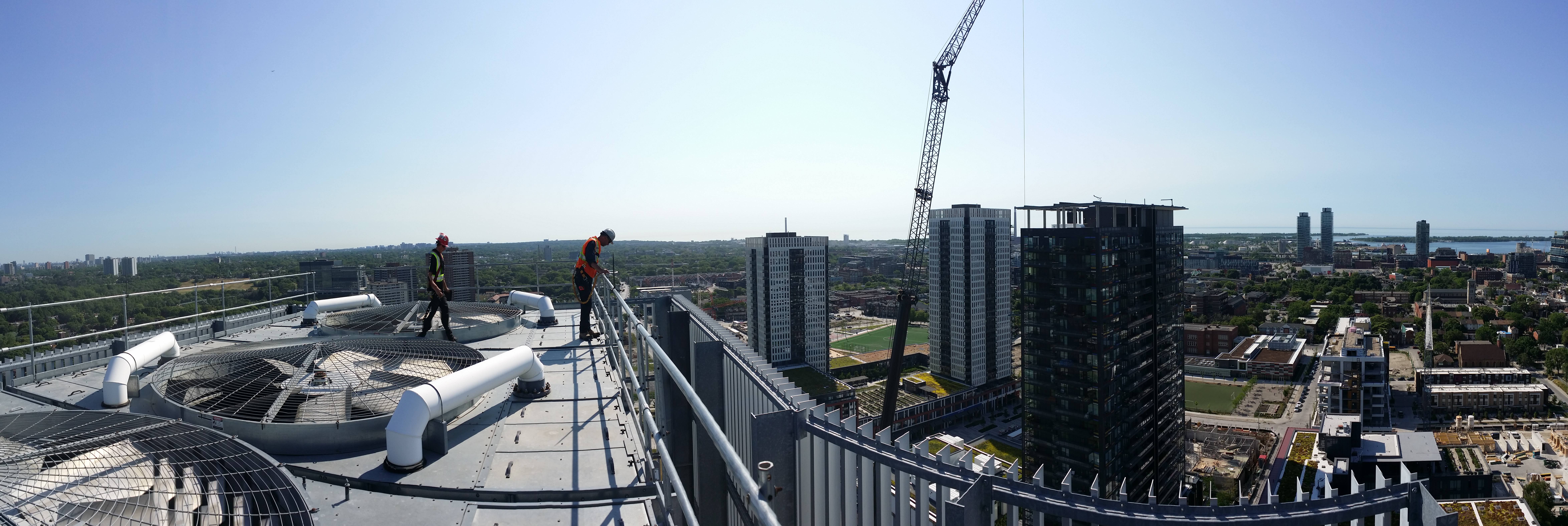
Read the full story
View the full write up to learn more about how we helped this energy center quiet down to gain community support.
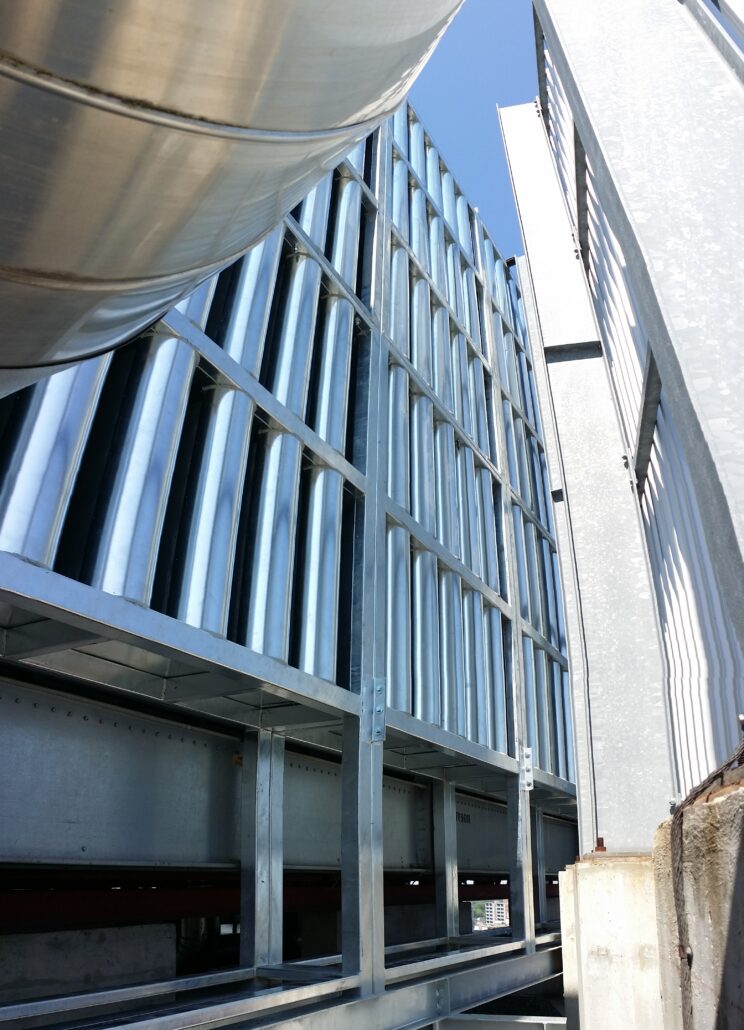
Let's work together
Contact a member of our team now to find out how Parklane can help provide an effective, customized solution to your organization’s noise control challenges.
